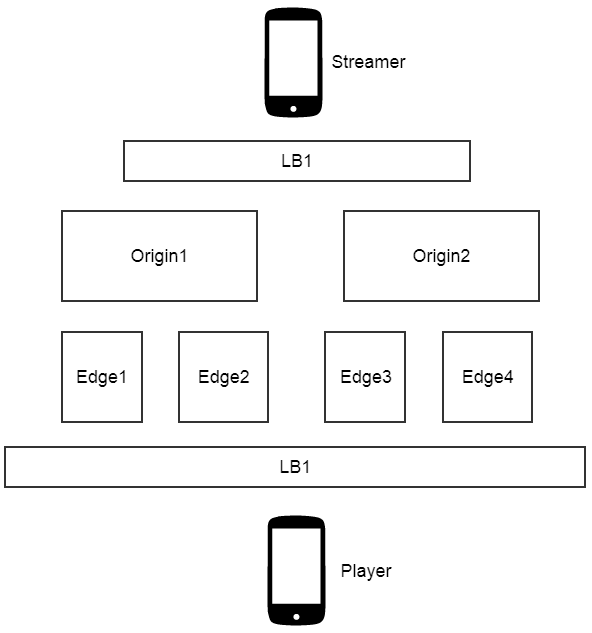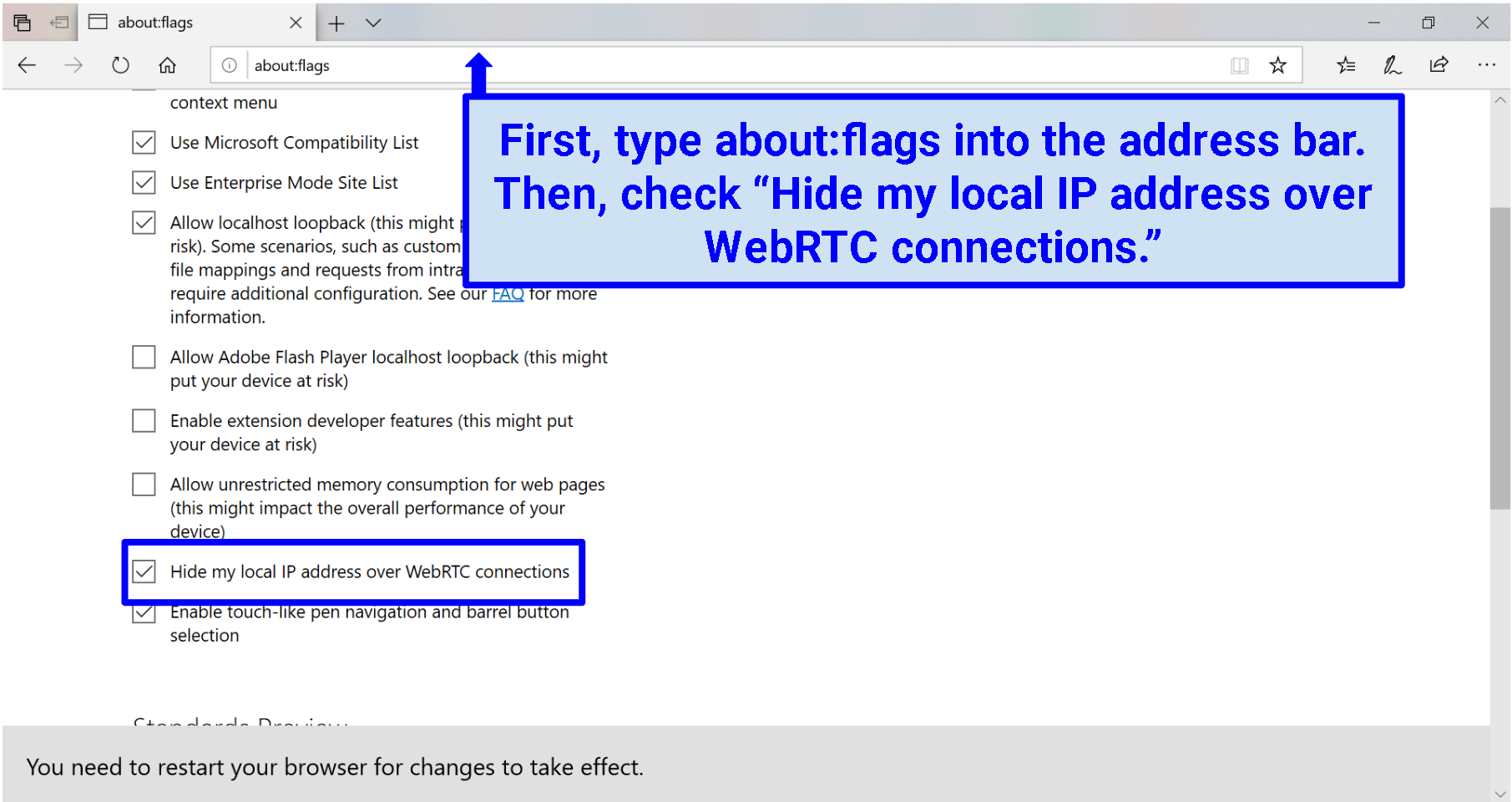- Desktop PC
- Google Chrome versions 28+
- Mozilla Firefox versions 22+
- Microsoft Edge versions 12+
- Safari versions 11+
- Opera versions 18+
- Vivaldi versions 1.9+
- Android
- Google Chrome versions 28+
- Mozilla Firefox versions 24+
- Opera Mobile versions 12+
- Chrome OS
- Firefox OS
- Blackberry versions 10+
- iOS versions 11+
- MobileSafari/WebKit
- Tizen versions 3.0+
How to disable WebRTC in Google Chrome for Desktops:
May 22, 2020 WebRTC stands for “Web Real-Time Communication”. This basically allows for voice, video chat, and P2P sharing within the browser (real-time communication) without adding extra browser extensions. What is a WebRTC leak? A WebRTC leak is when your external (public) IP address is exposed via your browser’s WebRTC functionality.
Simple Explanation: You can’t. Use a Chrome Extension or switch Web-Browsers.
Client-side WebRTC code samples. To test your webcam, microphone and speakers we need permission to use them, approve by selecting “Allow”. Jan 16, 2020 WebRTC has a new browser – kind of. Yesterday Microsoft’s “new” Edge browser based on Chromium – commonly referred to Edgium – went GA. This certainly will make life easier for WebRTC developers since the previous Edge had many differences from other implementations. WebRTC stands for “Web Real-Time Communication”. This basically allows for voice, video chat, and P2P sharing within the browser (real-time communication) without adding extra browser extensions. What is a WebRTC leak? A WebRTC leak is when your external (public) IP address is exposed via your browser’s WebRTC functionality.
Detailed Explanation: For some crazy reason Google never added an option in settings to disable WebRTC, even with all the complaining online through social media and forums, even their own forums. Here are the three most popular WebRTC blocking extensions for Chrome.
- WebRTC Leak Prevent – Has three modes of operations and an on/off toggle button.. 91,986 Users, 225 Ratings, 3.89 Stars.
- WebRTC Control – Has an on/off toggle button, no options. 26,954 Users, 42 Ratings, 4.64 Stars
- Easy WebRTC Block – No options, no on/off toggle button. 10,435 Users, 19 Ratings, 4.37 Stars
Another option would be uBlock Origin if you want to block advertisements and pop-ups along with WebRTC Leak Scripts. However, a major concern with using any of the “WebRTC Leak” blocking extensions for Chrome is that they only block scripts that get your IP from the leak from running on websites, but the leak is still actually there and not fixed at all.

No matter which method used, Test for IP Leaks when done using this WebRTC Leak Checker.
How to disable WebRTC in Mozilla Firefox for Desktops:
Simple Explanation: In “about:config” Set “media.peerconnection.enabled” to “false”.
Detailed Explanation:
- Navigate to “about:config” in the Firefox address bar.
- Click the “I’ll be careful, I promise!” button.
- Search for “media.peerconnection.enabled” using search blank.
- Double click the media.peerconnection.enabled entry and the value column will now be “false”
- Test for IP Leaks using this WebRTC Leak Checker.

To disable all WebRTC related setting in about:config then search for and match all of the following settings:
- media.peerconnection.turn.disable = true
- media.peerconnection.use_document_iceservers = false
- media.peerconnection.video.enabled = false
- media.peerconnection.video.vp9_enabled = false
- media.peerconnection.video.h264_enabled = false
- media.peerconnection.identity.enabled = false
- media.peerconnection.identity.timeout = 1
How to disable WebRTC in Microsoft Edge for Desktops:
Simple Explanation: You can’t. There is a way to at least stop WebRTC from leaking your Local IP address – In “about:flags” tick the box next to “Hide my local IP address over WebRTC connections”.
Detailed Explanation: Microsoft screwed around for a while developing their own WebRTC alternative, ORTC, in true Microsoft form, and support for WEbRTC was delayed. Microsoft did eventually add WebRTC capabilities to Edge browser on Windows 10 build 15019 and later, but not Internet Explorer. Sadly, there is no way to disable WebRTC in Edge, it can only be adjusted to not reveal Local IP addresses.
- Navigate to “about:flags” using the address bar.
- Check the box next to the “Hide my local IP address over WebRTC connections” option.
- Test for IP Leaks using this WebRTC Leak Checker.
How to disable WebRTC in Safari for Desktops:
Simple Explanation: You can’t.
Detailed Explanation: Apple announced the addition of WebRTC support to Safari 11 for iOS but doesn’t mention adding it to Safari in Mac OS for desktops/laptops. Information is scarce.
How to disable WebRTC in Opera for Desktops:
Simple Explanation: You can’t. Use a Opera Extension or switch Web-Browsers.
Detailed Explanation: Again, for some unexplained reason, Opera failed to add a way in it’s settings to disable WebRTC, just like Google Chrome. User’s must use an Opera browser extension to block WebRTC IP requests. Here’s the steps to take:
Webrtc Edge Disable
- Install the WebRTC Leak Prevent Extension (87,024 Users, 18 Ratings, 4 Stars) for Opera and enable it.
- Go to WebRTC Leak Prevent’s preferences, and set the top setting’s drop-down to be “Disable non-proxied UDP (force proxy)”.
- Check the “Prevent WebRTC from using non-proxied UDP” box.
- Test for IP Leaks using this WebRTC Leak Checker.
Another thing to consider would be the uBlock Origin extension for Opera if you’d like to block WebRTC Leak Scripts as well as pop-ups and adverts.
How to disable WebRTC in Vivaldi for Desktops:
Simple Explanation: In vivaldi://settings/privacy/ uncheck the “Broadcast IP for best WebRTC Performance” box under WebRTC IP handling.
Detailed Explanation:
- Load vivaldi://settings/privacy/ in the browser’s address bar.
- Locate WebRTC IP handling.
- Remove the checkmark from “Broadcast IP for best WebRTC Performance”.
How to disable WebRTC in Google Chrome for Android:

Simple Explanation: In chrome://flags/#disable-webrtc enable the option and restart Chrome to apply.
Detailed Explanation:
However, you can disable WebRTC by typing chrome://flags/#disable-webrtc in the address bar, and tap Go. Enable the option and restart Chrome to apply the setting.
- Navigate to “chrome://flags/#disable-webrtc” in the Chrome address bar.
- Enable the option.
- Restart Google Chrome to Apply the setting change.
- Test for IP Leaks using this WebRTC Leak Checker.
How to disable WebRTC in Mozilla Firefox for Android:
Simple Explanation: In “about:config” Set “media.peerconnection.enabled” to “false”.
Detailed Explanation:
- Navigate to “about:config” in the Firefox address bar.
- Search for “media.peerconnection.enabled” using search blank.
- Double click the media.peerconnection.enabled entry and the value column will now be “false”
- Test for IP Leaks using this WebRTC Leak Checker.
To disable all WebRTC related setting in about:config then search for and match all of the following settings:
- media.peerconnection.turn.disable = true
- media.peerconnection.use_document_iceservers = false
- media.peerconnection.video.enabled = false
- media.peerconnection.video.vp9_enabled = false
- media.peerconnection.video.h264_enabled = false
- media.peerconnection.identity.enabled = false
- media.peerconnection.identity.timeout = 1
Learn more at the WebRTC Wikipedia page. Thanks go to diafygi for the WebRTC Checking script.
Real-time communication for the web
What can WebRTC do?
Application flow
Webrtc Edge Code
Next steps
